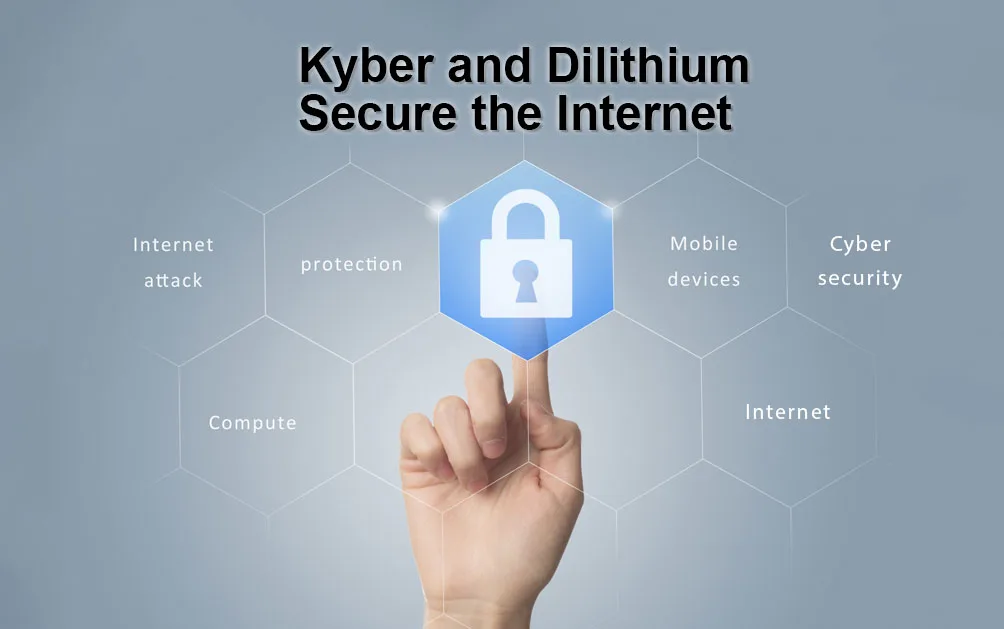Why Kyber and Dilithium Could Be the New Locks of the Internet
Talk about quantum computers and people usually imagine something glowing in a lab, run by scientists in white coats. And sure, the reality isn’t too far off, but the real story is this—if these machines ever grow up, they’ll have the power to tear down the locks that protect almost everything online.
Right now, the internet leans on systems like RSA and elliptic curve cryptography. For decades, those algorithms have been the strong padlocks on digital doors. But a big enough quantum computer could crack them open in no time. That’s why cryptographers have been busy designing new locks that can survive the storm. Two names keep coming up: Kyber and Dilithium.
What makes quantum computers such troublemakers Kyber and Dilithium
Think of a regular computer like a light switch. It’s either on or off, one or zero. Easy. A quantum computer, on the other hand, is like a light switch that can be half-on and half-off at the same time, until you actually look at it. This weird trick is called superposition. Add a couple more quirks—interference and entanglement—and suddenly you’ve got a machine that can explore countless possibilities at once.
Now here’s the kicker: you don’t get to see all those possibilities. When you finally check, the qubits collapse to just one value. The art of quantum programming is making sure the right answer is the one most likely to pop out.
Back in 1994, Peter Shor came up with an algorithm that used this magic to factor big numbers fast. That doesn’t sound dramatic, but factoring is exactly the problem that keeps RSA safe. Around the same time, Grover’s algorithm showed up and made brute-force key searches a lot faster too. Together, these discoveries were a wake-up call. If anyone built a large enough quantum computer, the locks we use today could disappear like mist on a hot day.
Progress is slow but steady Kyber and Dilithium
So where are we now? Not as far along as the hype might suggest. The truth is, qubits are fussy little things. They lose their state, get noisy, and need constant babysitting with error correction. Imagine trying to balance hundreds of spinning plates while someone keeps shaking the table—that’s what keeping qubits stable feels like.
The largest number factored on a real quantum machine with Shor’s algorithm so far is just 21. That’s tiny compared to the massive 2048-bit numbers protecting online banking. But nobody’s relaxing. Companies like IBM, Google, and Amazon are pouring billions into research. Governments are doing the same. Nobody can say exactly when the breakthrough will come, but nobody wants to be caught sleeping when it does.
Post-quantum cryptography to the rescue Kyber and Dilithium
Instead of waiting around, researchers started building defenses. In 2017, NIST kicked off a global challenge to design algorithms that could withstand quantum attacks. Dozens of teams from around the world sent in their proposals. After years of testing, poking, and trying to break them, the winners were announced.
Kyber was chosen for key encapsulation—the process that lets two computers agree on a shared secret key.
Dilithium was picked for digital signatures, the stamps of trust that prove messages are genuine.
Others like Falcon and Sphincs+ also made the list, but Kyber and Dilithium are expected to see the heaviest use.
By 2024, these weren’t just research projects anymore. They became official standards: FIPS 203 for Kyber and FIPS 204 for Dilithium.
Why these two are special Kyber and Dilithium
Kyber and Dilithium belong to a family called lattice-based cryptography. The math behind them is heavy, built on problems that remain stubborn even for quantum computers.
In simple terms:
- Kyber is the safe way to exchange keys, even if someone’s listening in on the line.
- Dilithium is the way to sign messages so you know they haven’t been forged or altered.
What makes them practical is how lean they are. Keys, ciphertexts, and signatures are small enough not to clog up networks or slow things down. That matters. Nobody wants security that turns every login into a waiting game.
| Feature | Kyber (Key Encapsulation) | Dilithium (Signature) |
|---|---|---|
| Primary Use | Key exchange / encapsulation | Digital signatures / authenticity |
| Based on | Lattice-based problems | Lattice-based problems |
| Standard | FIPS 203 | FIPS 204 |
| Performance | Compact keys, efficient | Lean signatures, practical |
The government isn’t waiting around Kyber and Dilithium
In 2022, the U.S. National Security Agency rolled out something called CNSA 2.0, a fresh suite of cryptographic standards. RSA and elliptic curves were out. Kyber and Dilithium were in.
The deadlines they set are not far away. By 2025, government systems like software updates and cloud services need to start using these quantum-safe methods. By 2030, they should be the default everywhere inside critical infrastructure. That’s basically tomorrow in tech years.
Tech giants are already making moves Kyber and Dilithium
It’s not just governments. Companies aren’t waiting either. Google has tested hybrid versions of TLS that blend Kyber with elliptic curves, just to stay flexible. Apple announced in 2024 that iMessage now carries quantum-resistant protection. Signal, the secure messaging app, also added Kyber into its key exchange.
Amazon’s cloud services already offer optional hybrid setups that include Kyber. Their TLS library has it baked in, and researchers at AWS are working on more. Slowly but surely, the internet is being rewired to handle the future.
Should everyday users care now Kyber and Dilithium
Some say there’s no rush, since the big scary quantum computers don’t exist yet. But think about it this way: encrypted traffic being sent today could still be valuable years down the road. Intelligence agencies might already be stockpiling data, planning to unlock it later. That’s why early adoption matters. It’s not about panic—it’s about being ready before the storm arrives.
Wrapping this up Kyber and Dilithium
Kyber and Dilithium may sound like names from a sci fi novel but soon they will be part of everyday security online. They’re the next locks on the digital doors we all use, designed to withstand the strange new tools quantum computers will eventually bring.
Quantum progress is slow, but the clock is ticking. Governments, tech giants, and researchers aren’t waiting for the day it becomes a crisis. They’re moving now. And little by little, the internet we use daily will shift under the hood—quietly swapping old locks for new ones that can hold their ground against the computers of tomorrow.
Note for publishers: headings and content are preserved exactly as provided. Visible headings were left intact for readability; invisible keyword spans were added inside headings for semantic SEO compliance without altering the published wording.





